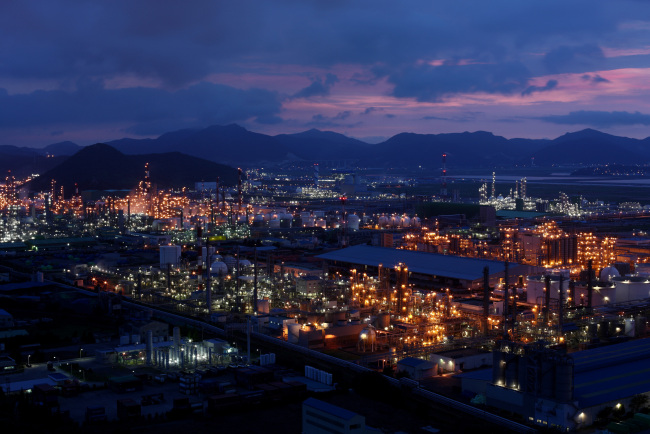Industrial complexes crucial to growth
Korea seeks to transform outdated factory parks into innovative business clusters
By Seo Jee-yeonPublished : Sept. 14, 2014 - 20:28
Some 2 million people working at the nation’s roughly 1,000 industrial complexes will be in a festive mood this week as Korea celebrates the new “Week of Industrial Complexes” from Monday.
“The weeklong event has been launched to celebrate the 50th anniversary of the nation’s first industrial complex (the Guro Industrial Complex in Seoul) and discuss the future of the backbone of the nation’s economic development,” said a Korea Industrial Complex Corp. official.
The KICOX, an affiliate of the Ministry of Trade, Industry and Energy, operates 51 state-run industrial complexes in major cities including Seoul, Ulsan, Changwon and Yeosu.
“The weeklong event has been launched to celebrate the 50th anniversary of the nation’s first industrial complex (the Guro Industrial Complex in Seoul) and discuss the future of the backbone of the nation’s economic development,” said a Korea Industrial Complex Corp. official.
The KICOX, an affiliate of the Ministry of Trade, Industry and Energy, operates 51 state-run industrial complexes in major cities including Seoul, Ulsan, Changwon and Yeosu.


“Business-friendly industrial complexes, designed to support the nation’s export-driven economic revival from the ashes of the Korean War in the 1960s, have played a key role in the industrialization of the country,” KICOX CEO Kang Nam-hoon said.
As of December 2012, industrial complexes made up about 66 percent of the nation’s total production and 74 percent of exports, according to the Industry Ministry.
Evolution of industrial complexes
The types and scale of industrial complexes have continued to evolve in line with the nation’s economic development plans.
In September 1964, the Park Chung-hee administration broke ground on the first industrial complex in Guro-dong, southwestern Seoul, with aims to attract manufacturers of light industry goods for export. The then-Guro Industrial Complex played a leading role in developing the nation’s labor-intensive light industries such as textiles in the 1960s.
In the 1970s and ’80s, the government started nurturing heavy industries such as the automotive, shipbuilding and petrochemical sectors, extending industrial parks to provincial cities like Ulsan, Changwon and Yeosu.
In the 1990s, when the nation’s industrialization was speeding up, industrial complexes, most of them specialized in manufacturing industries, faced new challenges as demands for value-added industries like information technology were growing.
Under a new government initiative aimed at shifting the nation’s industrial structure, the Guro Industrial Complex was renamed the Seoul Digital Industrial Complex in 2000 and started attracting high-tech companies and start-ups.
“The latest trend in industrial complexes is to build a cluster where similar and related firms and research institutions are located together to create maximum synergy,” said the KICOX official.
Tasks ahead
Industrial complexes, which have contributed to the nation’s economic growth over the past decades, are now facing a new challenge ― the fast aging of workers.
“The aging workforce is the most serious problem facing industrial complexes,” an Industry Ministry official said. In 2013, employees in their 40s and 50s made up about 52 percent of the workforce at industrial complexes.
Considering that young people shun working at firms within industrial complexes largely due to the low quality of life there, now complexes are working to accommodate more welfare and entertainment facilities.
As part of the efforts, the Industry Ministry recently eased regulations on the construction of nonplant facilities, such as movie theaters and other commercial buildings and rental houses, within industrial complexes.
The ministry also launched a new project aimed at upgrading some outdated industrial complexes into innovative business clusters, which they hope will inspire others to follow.
“The upgraded complexes, equipped with enhanced welfare benefits, will attract young and talented people,” the ministry official said.
By Seo Jee-yeon (jyseo@heraldcorp.com)









![[Hello India] Hyundai Motor vows to boost 'clean mobility' in India](http://res.heraldm.com/phpwas/restmb_idxmake.php?idx=644&simg=/content/image/2024/04/25/20240425050672_0.jpg&u=)








